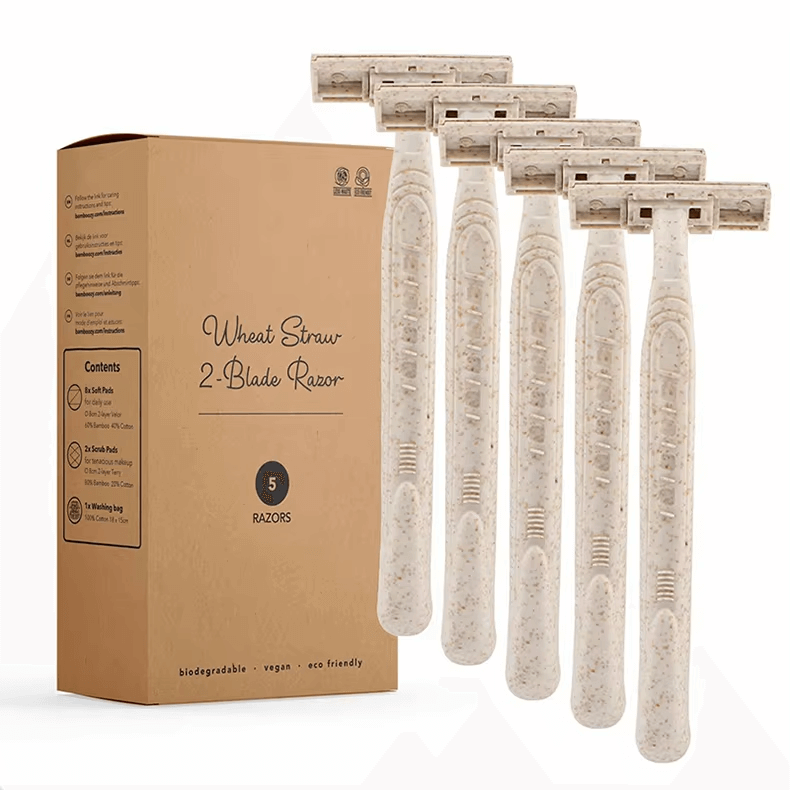Table of Contents
- Introduction
- Shift Towards Sustainable and Eco-Friendly Razors
- The Rise of Subscription Models in the Razor Market
- Technological Innovations Driving the Razor Industry
- Conclusion
Introduction
The global razor market is experiencing a dynamic evolution, fueled by shifting consumer preferences and technological advancements. As individuals increasingly value sustainability, convenience, and innovation in their personal care products, the industry is adapting with new approaches and solutions. This article examines three pivotal trends shaping the razor market: the move towards sustainable and eco-friendly products, the growing popularity of subscription models, and cutting-edge technological innovations.
Shift Towards Sustainable and Eco-Friendly Razors
A significant trend in the razor market is the transition to sustainable and eco-friendly personal care products. This shift is driven by heightened consumer awareness of the environmental consequences of their choices, particularly among younger, eco-conscious demographics. Disposable razors, once prized for their convenience and affordability, are now scrutinized for their short lifespan and reliance on non-recyclable plastics, which contribute to global plastic pollution.

Wheat Straw double edge disposable razors
In a world where sustainability meets style, the Wheat Straw Double Edge Disposable Razor offers a revolutionary shaving solution for eco-conscious businesses.
In response, manufacturers are turning to sustainable materials like recycled metals, bamboo, and biodegradable plastics. Industry leaders such as Gillette, Schick, and Harry’s have introduced products designed to minimize plastic use, extend blade durability, and incorporate recyclable or reusable components. For instance, Gillette has rolled out a line featuring metal handles and packaging made from recycled materials, appealing to environmentally minded consumers.
Reusable razors with replaceable blades are also gaining traction. This approach allows users to invest in a single durable handle and swap out blades as needed, reducing waste and offering a cost-effective alternative over time. Subscription services from companies like Dollar Shave Club and Harry’s enhance this trend by delivering reusable handles and replacement blades directly to customers, further decreasing reliance on disposable options. Additionally, brands are adopting minimalist, plastic-free packaging to align with the broader sustainability movement.
This focus on sustainability is expected to intensify in the coming years, driving innovation in eco-friendly production processes, recyclable materials, and zero-waste packaging solutions.
The Rise of Subscription Models in the Razor Market
Subscription models are revolutionizing the razor market, offering a convenient and consumer-friendly approach to personal care. Companies such as Dollar Shave Club and Procter & Gamble have pioneered this trend, providing monthly deliveries of razor blades or full razors to subscribers.
A key milestone in this space occurred in October 2023, when Unilever announced the sale of Dollar Shave Club to Nexus Capital Management. This deal underscores Dollar Shave Club’s evolution from a razor-centric provider to a broader personal care brand, now offering products like electric grooming tools. For Unilever, the sale reflects a strategic pivot toward core business priorities, while Nexus Capital aims to bolster Dollar Shave Club’s direct-to-consumer subscription model. This transaction highlights the enduring potential and commercial viability of subscription services in the razor industry.
Beyond convenience, these models support sustainability by promoting reusable razors and reducing the environmental footprint of disposable products, aligning with consumer demand for both practicality and responsibility.
Technological Innovations Driving the Razor Industry
Technological advancements are propelling the razor market forward, meeting the rising demand for sophisticated personal care solutions amid increasing urbanization. Electric and manual razors have become staples, with hybrid models—combining shaving and trimming capabilities—catering to a wide range of consumer needs.
Reciprocating razors are advancing in flexibility, appealing to users seeking a precise and adaptable shave. The integration of lithium-ion battery technology in electric razors provides benefits like extended battery life and rapid charging, making them a popular choice.
A standout innovation is the Skarp laser razor, which uses a micro-laser to burn hair rather than cut it. This approach minimizes skin irritation and eliminates waste from disposable blades, showcasing how technology can address both consumer comfort and environmental concerns. Such innovations are setting the stage for the razor industry’s future growth and differentiation.
Conclusion
The razor market is at a turning point, shaped by consumer priorities for sustainability, convenience, and technological progress. The shift to eco-friendly products, the expansion of subscription models, and breakthroughs in razor technology are redefining the industry landscape. As environmental responsibility and personalized care continue to gain importance, manufacturers must innovate and adapt to meet these expectations, ensuring their relevance in an increasingly competitive global market.
 Xiruiglobal.COM
Xiruiglobal.COM

